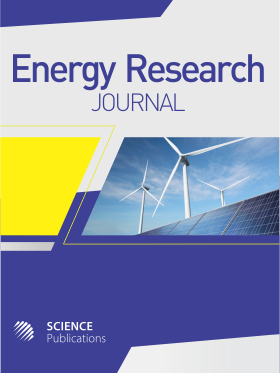Mathematical Model of the Optimum Heat Pipe Heat Exchanger for a Condenser of Vapor-Compression Refrigeration Cycle
- 1 Chiang Mai University, Thailand
Abstract
Problem statement: This study theoretically investigated applying heat pipe as a heat exchanger in the condenser of vapor compression refrigeration system for sustainable well-being. Split-type air conditioner for residential propose was considered. To reduce pressure drop and recover heat from the condensing process of the refrigeration cycle, this investigation tried to use Closed Loop Oscillating Heat Pipe (CLOHP) instead of the conventional condenser in split-type air conditioner. Approach: The system was single stage with reciprocating compressor which operated at steady state. The refrigerating capacity was 12,500 Btu h-1 and refrigerant was R22. The vapor compression refrigeration system was simulated to determine effect of mass flow rate of refrigerant on various parameters; such as refrigerating capacity, compressor power, heat rejection of condenser and Coefficient of Performance. Results: It was found that, at the normal operating and 3,663 W of the cooling load, mass flow rate of refrigerant, compressor power, heat rejection of condenser and Coefficient of Performance were 0.031 kg sec-1, 1,174 W, 4,837 W and 3.1, respectively. In addition, an increase in evaporating temperature or a decrease in condensing temperature results in increase of refrigerating capacity. CLOHP heat exchanger was simulated to predict optimum sizing on the basis of thermo-economical method. It was found that the optimum sizing of CLOHP heat exchanger with R123 as working fluid were; 0.1 m of evaporator section Length (Le), 0.1 m of condenser section Length (Lc), 2.03 mm of inner Diameter (Di) and 218 turns of number of turn (N). The optimum sizing when water was used as working fluids were 0.1 m of Le, 0.1 m of Lc, 2.03 mm of Di and 176 of N. Finally, the optimum sizing when ethanol was used as working fluids were 0.1 m of Le, 0.1 m of Lc, 2.03 mm of Di and 243 of N. Moreover, net saving of R123, water and ethanol systems at the optimum size were 9,095, 9,117 and 9,082 USD, respectively. Conclusion: The optimum AHE, N, Le, Lc and Di are 0.45 m2, 176 turns, 0.1, 0.1 and 0.00203 m, respectively.
DOI: https://doi.org/10.3844/erjsp.2010.104.110

- 6,874 Views
- 7,738 Downloads
- 2 Citations
Download
Keywords
- Heat pipe heat exchanger
- vapor compression refrigeration
- closed loop oscillating heat pipe
- optimum
- thermo-economical method
